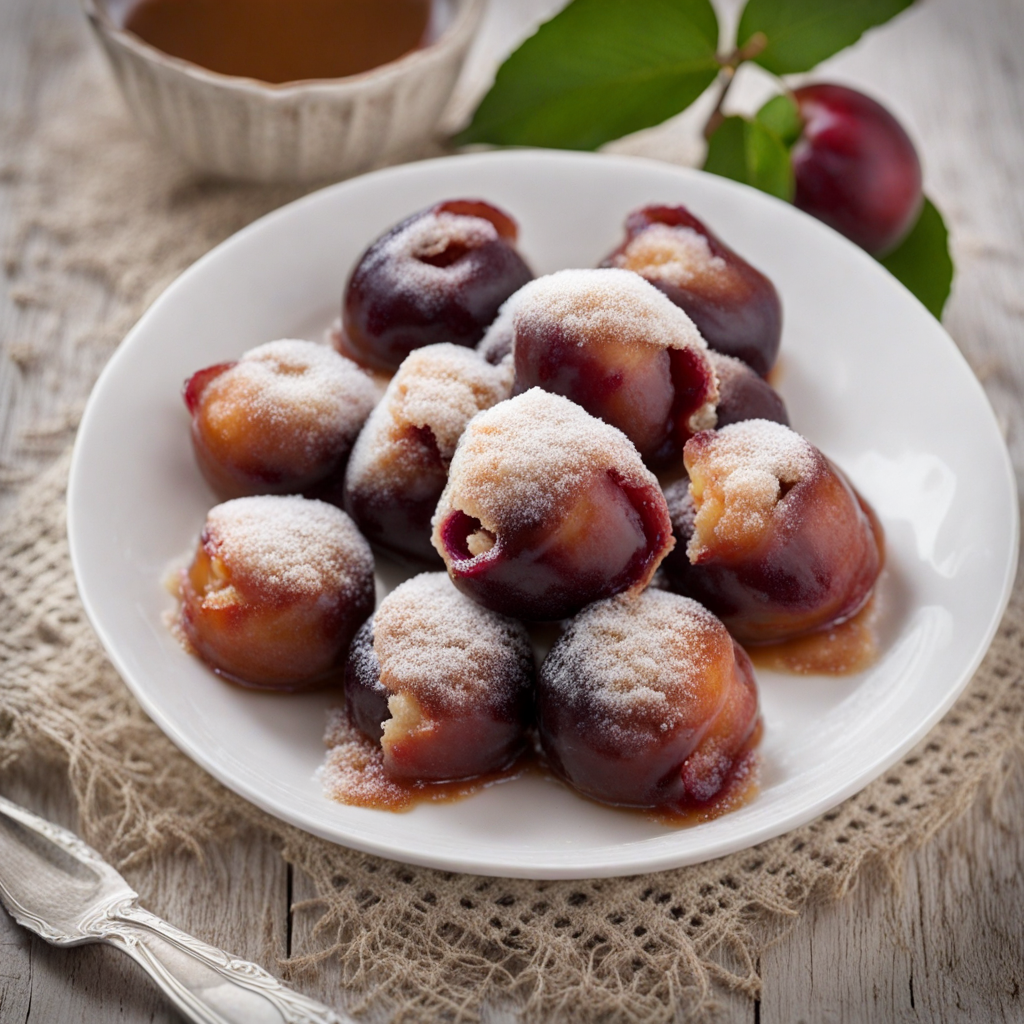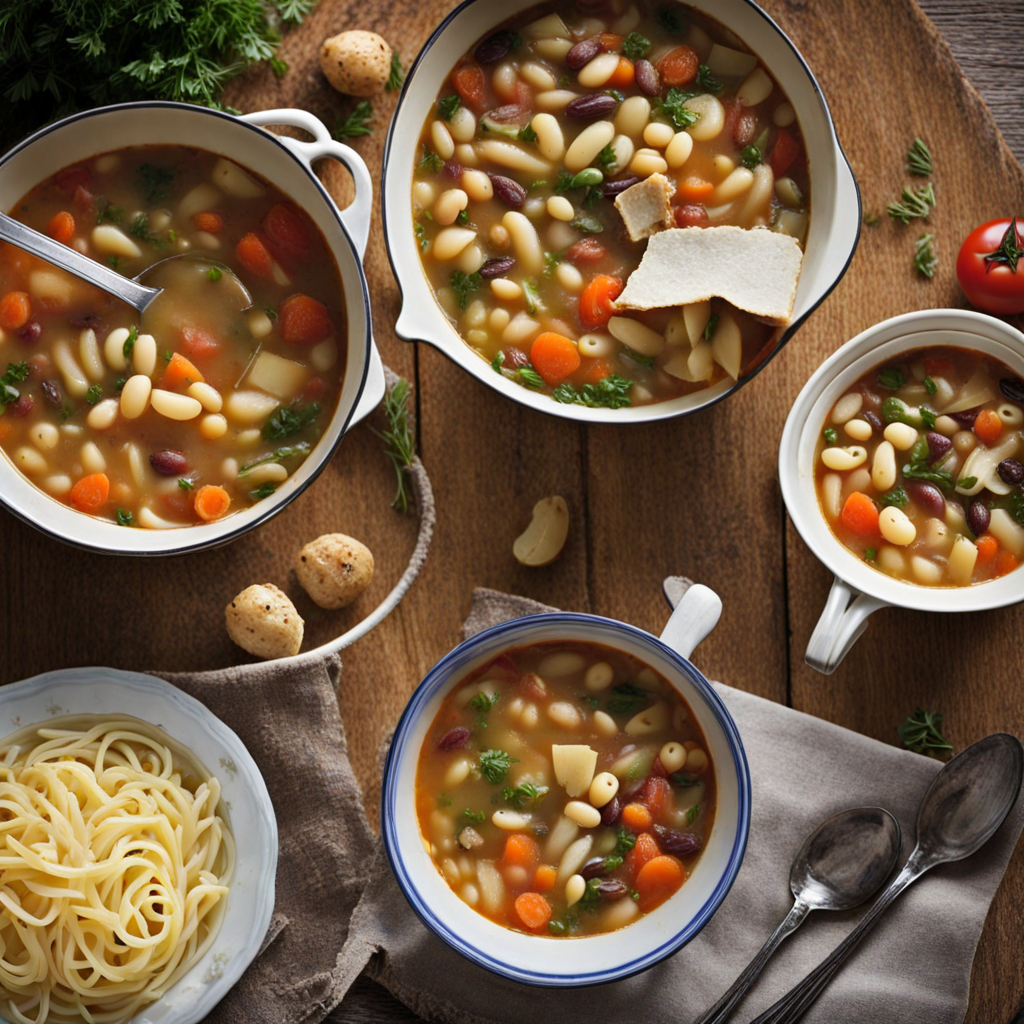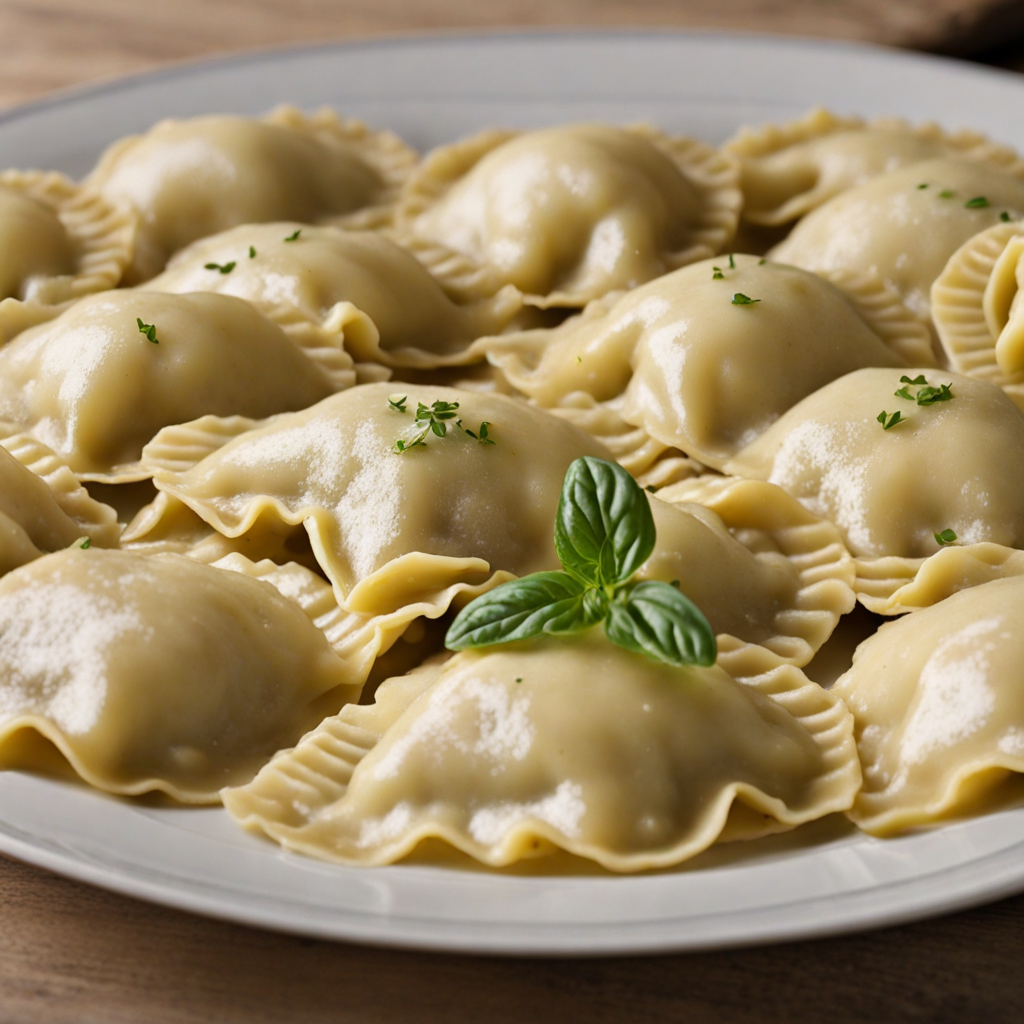Plum Dumplings
Plum dumplings, or "štruklji s slivami," are a delightful Slovenian dish that beautifully combines sweet and savory flavors, making them a must-try for any adventurous foodie. These dumplings are typically made from a soft, doughy exterior crafted from flour, potatoes, or a combination of both, creating a tender and pillowy texture that encases the star ingredient – juicy, ripe plums. The plums can be either fresh or dried, with the fresh variety offering a burst of tartness that perfectly complements the sweetness of the dough. When cooked, the dumplings take on a delightful sheen, making them visually appealing as well as delicious. Once boiled or steamed, the plum dumplings are often served with a generous dusting of powdered sugar, which adds a touch of sweetness and enhances their flavor profile. A drizzle of melted butter or a sprinkle of breadcrumbs provides a rich, nutty contrast that elevates the dish further. Traditionally enjoyed as a dessert or a sweet treat, these dumplings can also be paired with a dollop of sour cream or yogurt for a tangy balance, making them versatile enough to suit various palates. The combination of flavors and textures creates a satisfying dish that is both comforting and indulgent. Exploring the world of plum dumplings offers an opportunity to experience the culinary heritage of Slovenia, where local ingredients and traditional recipes come together in harmony. Each bite transports you to the picturesque landscapes of Slovenia, where plums are a cherished fruit, and the craft of dumpling-making is passed down through generations. Whether you are enjoying these dumplings at a local eatery or attempting to recreate them at home, the experience is sure to be a memorable journey into the heart of Slovenian cuisine.
How It Became This Dish
Slivovi Cmoki: A Culinary Journey Through Slovenia Introduction: The Essence of Slivovi Cmoki At the heart of Slovenian cuisine lies a dish that encapsulates the simple yet profound relationship between food, culture, and tradition: Slivovi cmoki. These delightful plum dumplings, often served as a dessert or sweet treat, have a rich history that mirrors the agricultural practices, seasonal cycles, and social customs of Slovenia. With their tender dough, luscious plum filling, and dusting of sugar, Slivovi cmoki are not merely food; they represent a tapestry of Slovenia's cultural heritage. Origins: A Fruitful Beginning The origins of Slivovi cmoki can be traced back to the rural kitchens of Slovenia, where home cooks relied on locally available ingredients. Plums, particularly the native varieties such as the "Cacanska Lepotica" (Cacanska Beauty), have flourished in Slovenia's temperate climate, especially in regions like the Prekmurje and Lower Sava Valley. These plums are known for their sweetness and juiciness, making them the ideal filling for dumplings. The tradition of making fruit dumplings is not solely unique to Slovenia; it can be found across Central and Eastern Europe, including Austria, Hungary, and Poland. However, Slovenia's geographical location at the crossroads of various influences has allowed it to develop its own unique take on this dish. The use of plums in the dumplings reflects Slovenia’s abundant fruit harvests, showcasing the importance of seasonal produce in traditional Slovenian cooking. Cultural Significance: A Taste of Home and Heritage Slivovi cmoki is more than just a culinary delight; they are imbued with cultural significance. Traditionally, they are made during the late summer and early autumn months, coinciding with the plum harvest. This seasonal aspect of the dish highlights the agricultural rhythms that govern life in Slovenia. Families often come together to prepare Slivovi cmoki, turning the cooking process into a communal activity that strengthens family bonds and preserves culinary traditions. In Slovenian culture, food is a vehicle for storytelling and sharing. Slivovi cmoki often appear at family gatherings, celebrations, and holidays, symbolizing togetherness and the joy of sharing a meal. They are particularly popular during festive occasions, such as harvest festivals, where the abundance of fruits is celebrated. The act of making these dumplings is often passed down through generations, with each family adding its own twist—be it a special ingredient or a unique method of preparation. Development Over Time: From Tradition to Modernity As Slovenia entered the 20th century, the culinary landscape began to shift. The industrialization and urbanization of the country led to changes in food production and consumption patterns. Traditional dishes like Slivovi cmoki faced the threat of being overshadowed by fast food and mass-produced alternatives. However, the late 20th century saw a resurgence of interest in traditional Slovenian cuisine, thanks in part to the country's independence in 1991 and a growing movement to celebrate national identity. Culinary enthusiasts and chefs began to explore the roots of Slovenian gastronomy, reinterpreting classic dishes while staying true to their essence. Slivovi cmoki emerged as a beloved dish in this culinary revival, often featured in restaurants that aimed to showcase local ingredients and traditional preparations. Chefs began experimenting with variations, incorporating different types of plums, adding spices like cinnamon, or serving the dumplings with innovative sauces and toppings. In contemporary Slovenia, Slivovi cmoki represents a bridge between the past and the future. Many restaurants now offer modern takes on the dish, featuring locally sourced ingredients and artistic presentations. Additionally, the rise of food tourism has led to an increased awareness and appreciation for traditional Slovenian dishes, allowing Slivovi cmoki to shine on an international stage. Slivovi Cmoki in the Global Context As Slovenia’s culinary identity continues to be recognized worldwide, Slivovi cmoki have gained traction beyond the borders of their homeland. Food festivals, culinary competitions, and international events have introduced this traditional dish to a broader audience. In recent years, Slovenian chefs have participated in global culinary events, showcasing Slivovi cmoki alongside other traditional Slovenian dishes, helping to elevate their status on the international culinary scene. The global interest in Slivovi cmoki aligns with a larger trend towards artisanal and homemade foods. As consumers increasingly seek authentic experiences and flavors, the demand for traditional dishes that tell a story has surged. Slivovi cmoki, with their rich history and cultural significance, are well-positioned to meet this demand, highlighting the importance of preserving culinary heritage while embracing innovation. Conclusion: The Enduring Legacy of Slivovi Cmoki In the ever-evolving landscape of global cuisine, Slivovi cmoki stand as a testament to the enduring power of tradition. They embody the spirit of Slovenian culture, connecting generations through shared recipes and communal cooking experiences. As Slovenia continues to carve out its niche in the culinary world, Slivovi cmoki serve as a delicious reminder of the importance of heritage, the beauty of local ingredients, and the joy of gathering around the table. Whether enjoyed at a family gathering, a festive celebration, or a fine dining restaurant, Slivovi cmoki resonate with the taste of home and the essence of Slovenian identity. They remind us that food is not just about sustenance; it is a celebration of life, a connection to our past, and an expression of our cultural identity. In every bite of these plum dumplings, we taste not only the fruits of the harvest but also the stories and traditions that have shaped Slovenia’s culinary landscape for generations.
You may like
Discover local flavors from Slovenia







